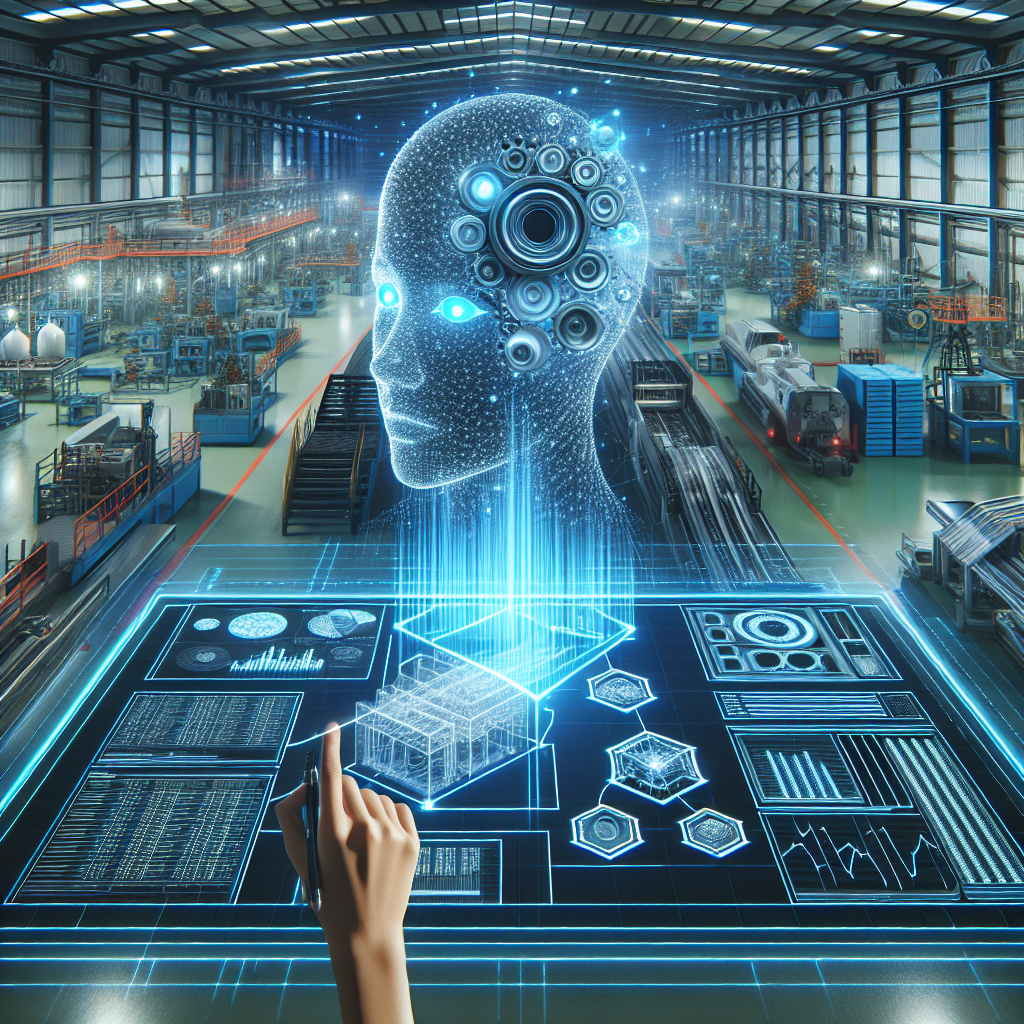In recent years, the manufacturing industry has seen a significant shift towards automation and the adoption of artificial intelligence (AI) technologies. One area where AI is making a big impact is in material requirement planning (MRP), which is the process of determining the materials needed for production and ensuring that they are available at the right time and in the right quantities.
AI-driven MRP systems use advanced algorithms and machine learning techniques to analyze data and forecast demand, optimize inventory levels, and streamline the supply chain. These systems can help manufacturers reduce costs, improve efficiency, and increase productivity. In this article, we will explore the future of AI-driven MRP in manufacturing and the benefits it can bring to the industry.
Benefits of AI-driven Material Requirement Planning
There are several key benefits of using AI-driven MRP systems in manufacturing:
1. Improved Forecasting: AI algorithms can analyze historical data, market trends, and other factors to predict future demand more accurately. This can help manufacturers avoid stockouts and overstocking, leading to better inventory management and cost savings.
2. Optimize Inventory Levels: By continuously monitoring demand and adjusting inventory levels in real-time, AI-driven MRP systems can help manufacturers reduce excess inventory and carrying costs. This can lead to improved cash flow and profitability.
3. Streamline Supply Chain: AI can help optimize the entire supply chain by identifying bottlenecks, reducing lead times, and improving supplier relationships. This can result in faster delivery times, reduced production costs, and better customer satisfaction.
4. Enhance Decision Making: AI-driven MRP systems can provide manufacturers with valuable insights and recommendations to support decision-making. This can help management make more informed decisions and respond quickly to changing market conditions.
5. Increase Productivity: By automating repetitive tasks and streamlining processes, AI-driven MRP systems can free up resources and allow employees to focus on more strategic activities. This can lead to increased productivity and innovation within the organization.
The Future of AI-driven Material Requirement Planning
As AI technology continues to advance, the future of AI-driven MRP in manufacturing looks promising. Here are some key trends and developments to watch for in the coming years:
1. Integration with IoT: The Internet of Things (IoT) is playing an increasingly important role in manufacturing, with sensors and devices collecting real-time data from machines and equipment. AI-driven MRP systems can leverage this data to make more accurate forecasts and optimize production processes.
2. Enhanced Predictive Analytics: AI algorithms are becoming more sophisticated and can now analyze vast amounts of data to make highly accurate predictions. In the future, AI-driven MRP systems may be able to anticipate demand fluctuations, supply chain disruptions, and other factors that can impact production.
3. Personalization and Customization: As consumer preferences continue to evolve, manufacturers are under pressure to offer more personalized and customized products. AI-driven MRP systems can help companies meet these demands by optimizing production schedules, inventory levels, and supply chain logistics to accommodate individual customer requirements.
4. Collaboration and Connectivity: AI-driven MRP systems can facilitate collaboration among different departments within an organization and with external partners in the supply chain. By sharing real-time data and insights, manufacturers can improve communication, coordination, and decision-making across the entire value chain.
5. Sustainability and Green Manufacturing: With growing concerns about climate change and environmental sustainability, manufacturers are looking for ways to reduce waste, energy consumption, and carbon emissions. AI-driven MRP systems can help companies optimize production processes, minimize material waste, and adopt more eco-friendly practices.
Frequently Asked Questions (FAQs)
Q: How can AI-driven MRP systems help manufacturers reduce costs?
A: AI-driven MRP systems can help manufacturers reduce costs by improving inventory management, optimizing production schedules, and streamlining supply chain logistics. By accurately forecasting demand and optimizing resource allocation, companies can minimize excess inventory, reduce stockouts, and lower production costs.
Q: Are AI-driven MRP systems suitable for small and medium-sized manufacturers?
A: Yes, AI-driven MRP systems can benefit small and medium-sized manufacturers by helping them improve efficiency, increase productivity, and better manage their resources. Many AI solutions are now available as cloud-based services, making them more accessible and affordable for smaller companies.
Q: How long does it take to implement an AI-driven MRP system?
A: The implementation timeline for an AI-driven MRP system can vary depending on the complexity of the organization and the level of customization required. Some companies may be able to deploy a basic system within a few months, while others may need more time to integrate the technology with existing systems and processes.
Q: What are the potential challenges of implementing an AI-driven MRP system?
A: Some potential challenges of implementing an AI-driven MRP system include data quality issues, resistance to change from employees, and the need for additional training and support. It is important for companies to carefully plan and execute the implementation process to ensure a successful transition to the new technology.
Q: How can manufacturers ensure the security and privacy of data in an AI-driven MRP system?
A: Manufacturers can ensure the security and privacy of data in an AI-driven MRP system by implementing robust cybersecurity measures, encrypting sensitive information, and restricting access to authorized users. It is also important to comply with relevant regulations and standards to protect customer and company data.
In conclusion, the future of AI-driven Material Requirement Planning in manufacturing looks promising, with the potential to revolutionize the industry and drive significant improvements in efficiency, productivity, and profitability. By leveraging advanced AI algorithms, predictive analytics, and real-time data, manufacturers can optimize their operations, streamline their supply chain, and meet the evolving demands of customers and markets. As AI technology continues to advance, companies that embrace AI-driven MRP systems will be well-positioned to succeed in the increasingly competitive and fast-paced world of manufacturing.

